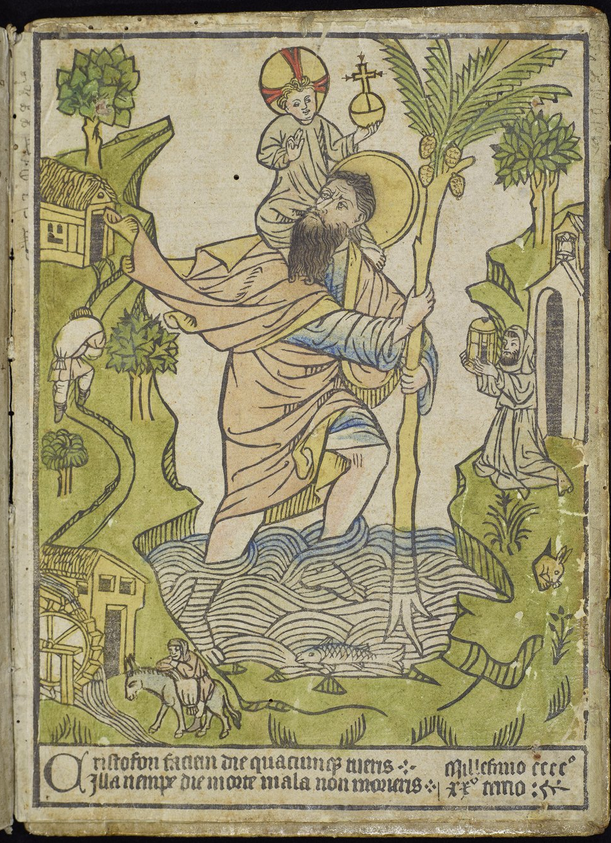
New Rylands Exhibition: Modern Research Technologies reveals stunning Insights into the European Printing Revolution
This blog entry is written by Dr Stephen Mossman.
The exhibition Transitions in Print: Revealing Secrets of the European Printing Revolution, which is open at the John Rylands Research Institute and Library 12 October 2022 – 18 March 2023, showcases a series of research projects that bring the most modern technological solutions to bear on some of the most ancient examples of European print culture.
We associate the invention of printing in Europe with the figure of Johann Gutenberg and his 42-line bible in the early 1450s. Yet that was only one form of printing—printing with movable type—amongst a variety of different reprographic techniques developed in the central decades of fifteenth-century Germany to mechanize the reproduction of texts and images.
What is more, we do not actually know what Gutenberg invented. The ‘black art’ of printing, so called because of the viscous black substance used in place of traditional inks to coat the surfaces to be printed, is dark to us in a rather different way. We only have material evidence of how printing with movable type was done, and how the type was made, from c.1480/90 at the earliest: a full generation after the first typographic printers.
Were they all doing the same thing? Were there multiple competing technologies at work? Did the process(es) change over time? There are good reasons to suspect that the answers might be ‘no’, ‘very possibly’, and ‘yes’. That is not to mention all the other reprographic technologies—blockbooks (ensembles of text and image printed with carved wooden blocks, or xylography), single-sheet wood- and metalcut printing, copperplate engraving, flock printing, and hybrids of all these different methods, which emerged in the same period and about which we know even less.
Imagine an analogy: that the first hard evidence of what an aeroplane looked like and how it worked survives from the mid-1930s. We know that aeroplane technology had revolutionized travel and warfare long beforehand, but we have no actual knowledge as to what earlier aircraft were like. We look at a prototype Spitfire and ask: so what did the Wright brothers invent? Was their aircraft like this one? Were there competing technologies of aeroplane design and manufacture, and did they change over time? What was the purpose of their invention—to transform travel, or warfare, or something different altogether? That all sounds absurd, but it is exactly the situation with which the historian of the print transformation in fifteenth-century Europe is faced. What we assume to be the case is not actually what we know, definitively and provably, to be so. And that is even before we get to the more interesting historical questions, like the social and economic factors at play to which early printing responded and which shaped its development.
New technologies—multispectral imaging, artificial intelligence (machine-learning through pattern recognition), and radiocarbon dating in particular—allow these old questions to be addressed afresh, and this exhibition showcases how the John Rylands Research Institute and Library is spearheading some of these cutting-edge enquiries, revealing new insights into the nature of the European Printing Revolution.
Such new technologies allow much greater precision and ease than older techniques to analyse the material output of fifteenth-century printing processes, but more significantly, they allow its analysis on a far greater scale than has ever been possible before. We stand at the verge of providing definitive answers, and so of being able to understand, in turn, the social and economic foundations of the European print transformation. Come and see exciting new research that shifts our understanding of this transformative period in the history of media!
Manchester, John Rylands Library, Latin MS 366: woodcut print of St Christopher, dated 1423 (but printed mid-1430s), one of the very earliest European prints in the generation before Gutenberg






0 Comments